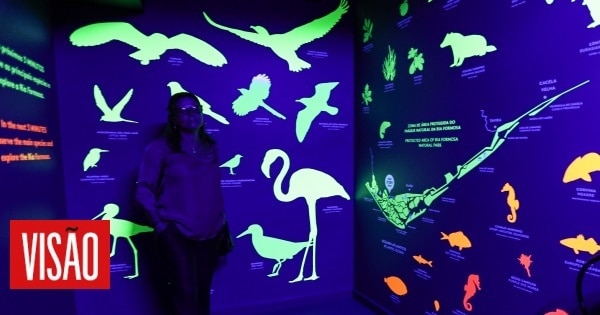Opened in the summer, the Faro Story Spot not only tells the history of the Algarve capital, going back to the time of the Roman Empire and ‘traveling’ to the present day, but also makes known the biodiversity of the Ria Formosa and, in the end, still sits the visitors at the table of a typical tavern.
The 18th century house where the center is located, in Largo da Sé, in the heart of the historic area, a few meters from the estuary, was probably a shop or tavern, known as Taberna da Pepa, where fishermen and shellfish gatherers sold their products and socialized. on the way back from work.
With a privileged location, the space emerged after several local agents identified the need to expand the tourist offer in the city, very focused on the beach and boat trips on the Ria Formosa.
“We had co-creation sessions with the University of the Algarve, cultural agents, tourism companies, among others, and most of them suggested creating something that would combine tourist entertainment with the cultural aspect,” the director of the company promoting the space, João Amaro, told Lusa. .
According to the official, after visiting various spaces, the concept of the Faro Story Spot was arrived at, a multimedia center that presents “in a fun and light way” the history of the city, the estuary that surrounds it and also the Mediterranean diet.
Although the project began to be outlined in 2018, some setbacks in the work, in addition to the covid-19 pandemic, delayed its execution, and it was only possible to open the space during this summer, he explained.
Upon arrival, visitors are greeted by Zé do Mar, who recounts key moments in the city, including the presence of the Romans, Muslims and, later, the Jews, who set up the first Portuguese typographic workshop in Faro and made their first impression of a book in the country, the “Pentateuch”.
The elevation of Faro to the status of a city in 1540, the attack by English troops in 1596 – who sacked the city and took with them the only known copy of the “Pentateuch”, currently on display at the British Library, London, UK –, as well as the destruction caused by the earthquake of 1755 are other stories related.
Visitors are then invited to proceed to the next room, where the animated seahorse Marino talks about the characteristics and origins of the Ria Formosa, as well as its fauna and flora and the products and businesses it generates.
In addition to the ria having already housed the largest community of seahorses in the world, which is currently in decline, with projects for its preservation, it still has the only resident community of chameleons in Portugal, an equally threatened species and target of protection. .
The last room recreates a tavern, inviting people to sit at the table to learn more about the Mediterranean diet, because although Portugal is not bathed by the Mediterranean, its gastronomy and habits are the mark of this ancient way of life.
The walls of the ‘tavern’ are covered in copper, tiles, cork and straw, among other materials typical of the region, which visitors are invited to touch.
After completing the visit, which lasts about 35 minutes – eight people can enter every half hour -, it is possible to enjoy a tasting of bread, olive oil and wine.
The price of tickets for the general public (adults) varies between 16 euros (visit only), 23 euros (visit and tasting) and 30 euros (visit and ‘brunch’). , students and residents.
The total investment was around 650 thousand euros, with the project being financed in around 150 thousand euros by community funds granted under the Operational Program Mar 2020.
MAD // MLS

